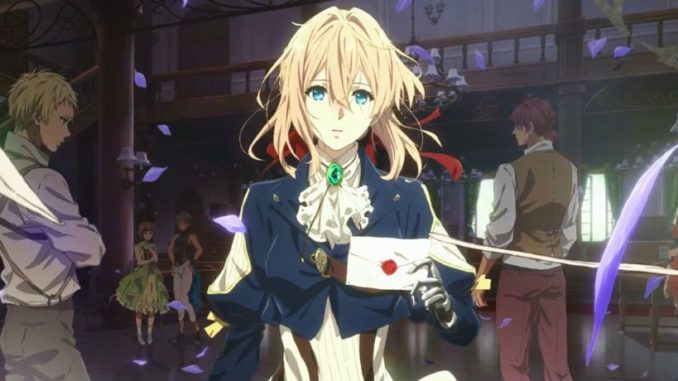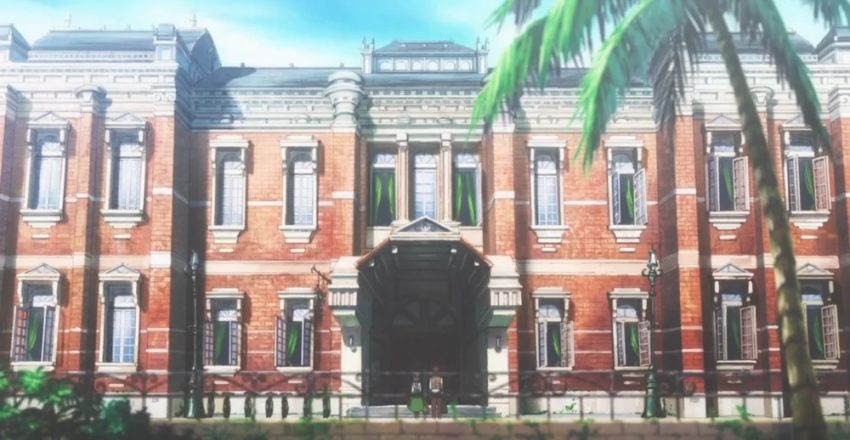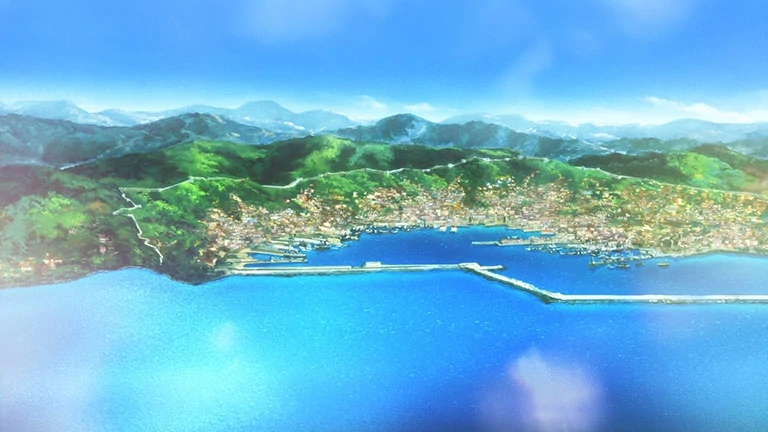Violet Evergarden
April 9, 2021 · 1 comment
By Jeannette Ng.

Set in the aftermath of an all-consuming war, Violet Evergarden follows the eponymous lead, an ex-child soldier, as she tries to piece together the fragments of her self through a new job ghost-writing letters.
The first episode of the TV anime opens with a recovering Violet struggling to adapt to civilian life as well as her new mechanical hands. Beneath her seemingly placid expression is a world of emotions she can neither name nor process. She does not understand the last words her now-missing commanding officer spoke to her, nor is she sure she knows how to carry out his last orders. She watches Cattleya Baudelaire, an Auto Memory Doll at the CH Postal Company, write a love letter for a man and as she hears again the last words of her commanding officer. In that moment, she realises her true calling.
Despite her obvious inability to articulate her own emotions — her face is frequently likened to that of a doll by others — Violet feels a great many emotions very deeply. Her desire to understand the deceptively simple phrase “I love you” underpins the whole series.

But it is not introspection that brings self-knowledge for Violet, but the act of empathy and writing letters for others. Loss and love haunt many of her clients. And her job is not simply the mechanical transcription of what is being said to her (though she does also do that too, on occasion) but to understand the unspoken emotions that the correspondent wants to convey. She has to unravel not just repressed feelings, but sometimes even the lies that the client is telling themselves. Only then can the right words be found. It is through these acts of empathy that Violet grows and comes closer to understanding both herself and the emotion of love.
The war itself casts a long shadow, appearing in flashbacks as an endless inferno. There are obvious inspirations taken from the European fronts of the two world wars in the design, seen in bayonets and helmets, and perhaps a dash of the Crimean War thrown in as well. The desperate actions of the “anti-peace” faction in the later episodes brings to mind the difficulties Japan had in the final days of the Pacific War, when its own anti-peace faction within the government repeatedly fought to keep the country locked in a war it had already lost.
The war is a constant element in the background of Violet Evergarden, leaving the audience with the sense that we are watching an epilogue to a much grander, continent-spanning epic. The idea that Violet herself was once a super-soldier, an unflinching killing machine with mysterious origins, feels like a familiar premise, as indeed it has been, most memorably Saikano (a.k.a. She, The Ultimate Weapon) and recently in Raised by Wolves. But we don’t begin there – the fighting is not the interesting part. We begin after the ceasefire, but before the signing of the peace treaty. There is an unspoken tension in the air, a fragility to the apparent peace. Many of the characters are still trying to make sense of what happened and what they have had to do to survive. Each still carries wounds and much like Violet, not all are aware of the full extent of their own trauma, making the act of healing all the more difficult.

The series is densely written, with each episode offering not just a poignant self-contained story of Violet’s latest client and what they need her to write for them, but also parallels with her own feelings and relationships, especially towards her absent commanding officer. The theme of love is refracted through each of them. In Luculia and her brother, Violet sees her own survivor’s guilt. In Princess Charlotte, Violet glimpses her own feelings of nascent romantic feelings for a distant, absent man, feelings that flourished despite needing to moderate them through rigid protocol and hierarchy. In the astrologer Leon, Violet has the foil of another orphan. In Aiden Field, she sees the echo of all the lives she has cut short on the battlefield.
Each vignette builds on the last as Violet visibly grows in confidence and self-knowledge. Kyoto Animation excels at giving each of the characters a unique feel, a distinctive silhouette and nuanced micro expressions. Heels click and eyes drown in feelings. Hands, especially, flounder and clench revealingly as characters lie both to themselves and each other. This is a series where silences can be loud and what is unspoken can be painfully obvious through a skipped breath or a shadowed glance.
Violet herself has been described by the director, Haruka Fujita, as a “sponge” as her body language evolves throughout the series, picking up new gestures and expressions from characters she comes to know. Her posture relaxes from the military stances that have been drilled into her back when she was Major Gilber’s pet super soldier.
From its street lamps to the names of the characters, Violet Evergarden’s setting of Telsis evokes turn-of-the-20th-century Western Europe. There are frilly bustles, imposing steam engines and cobbled streets galore. But there are also other flourishes in the worldbuilding, such as ubiquitous palm trees, an Asian tea set and khachapuri being eaten by the characters, as well as folk costumes that Iris’ family appear in. Overall, the effect is of a setting that is at once immediately familiar but also a little unexpected. Above all, there is a sense of depth to the world, where every object in it seems to possess its own story.

With the exception of Violet, the military is wholly populated by men. The scars that the war has left them with generate much of the story, but the series is also fascinated with its female characters — as admittedly most anime are, but Violet Evergarden shines a light upon their shifting status in the post-war world, and dramatises their interiority, their relationships with each other. Princess Charlotte’s last scene is not of her fairy-tale romance but one where she says goodbye to the woman who has been almost a mother to her. Irma the opera singer carries herself very differently off the stage, when her dramatic makeup has been shed. In many ways, Violet isn’t just learning to be human, she is also learning to be a woman. Her story cannot be removed from her into an abstract avatar of all humanity. She takes on the wholly feminine role of the Auto Memory Doll and the expectations that others have of her shape her. When she is mistaken for a doll by a young girl, it is that idealised, frilly femininity that she sees in Violet.
The status of flesh-and-blood Auto Memory Dolls in Telsis has shades of Japan’s Office Ladies (often abbreviated to OLs). After World War II, Japanese women joined the work force to perform clerical and secretarial work. Popular culture sees them as smart, fashionably dressed young women who would work only until they married. Auto Memory Doll Training School has shades of secretarial training and Iris, in particular, with her ambition and palpable familial pressure, seems informed by the OL archetype.
Despite the nominally urban setting of Leiden, the entire series of Violet Evergarden is lush with greenery. Where the war was barren and burning, the world after it is alive with plant life. Growth and change in the botanical world is how the series marks time, in stuttering time-lapses of flower buds emerging and blooming in dewy sunlight. Just as Kyoto Animation’s earlier A Silent Voice was crammed with subtle flower imagery, Violet’s own name comes from a resilient flower growing at the edge of a military field. Likewise, Iris is named for the fields of flowers that were in bloom at her birth. Violet writes fifty years’ worth of letters for Clara Magnolia in a conservatory in bloom. Bougainvillea is, of course, another flower, and one that means “all I can see is you” in the Victorian language of flowers. Princess Charlotte asks Violet to include the moon and flowers in her first love letter to Prince Damien.
The series is a rare wonder in the world of art, where each element, from the viscerally heavy, metallic clinks of Violet’s prosthetic hands to the elegiac use of light and shadow, works throughout and works beautifully together.
Jeannette Ng is the author of Under the Pendulum Sun.
Violet Evergarden is released in the UK by Anime Limited.
BS Simon
April 24, 2022 3:22 pm
This is one of my favorite series. I have gone back and watched it several times. I recommended this to a person that had finished serving in the Navy. After watching it he said it really captures the difficulty of transitioning back into civilian life. I recommend this series as often as I can.